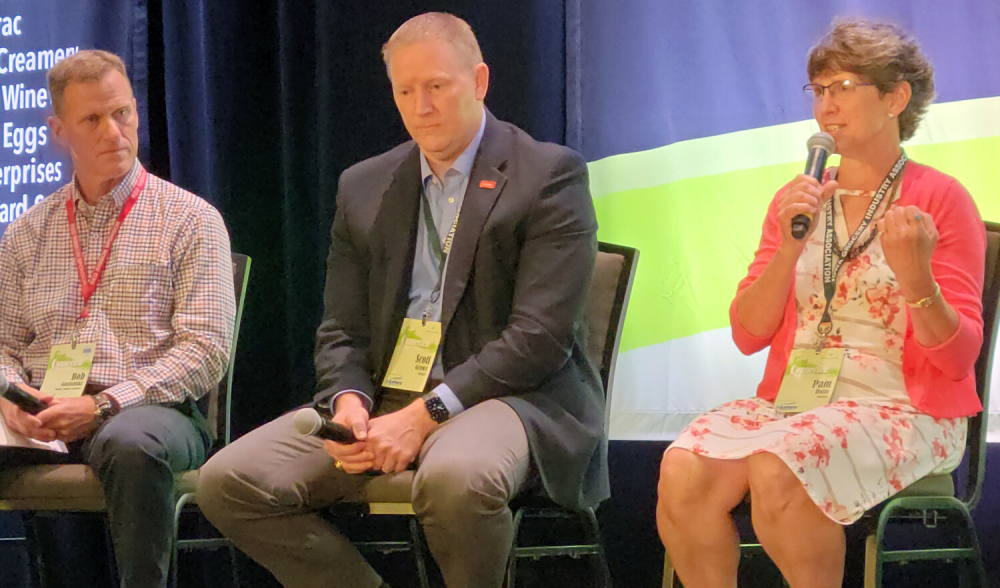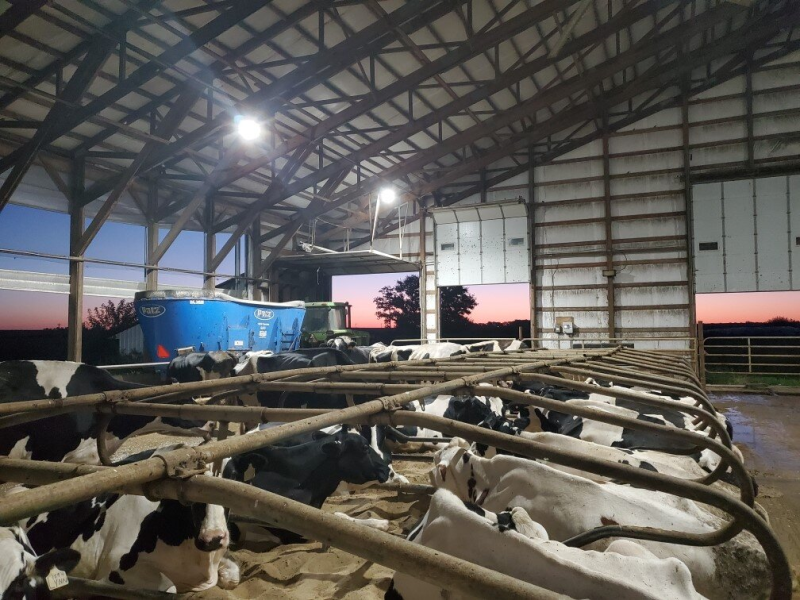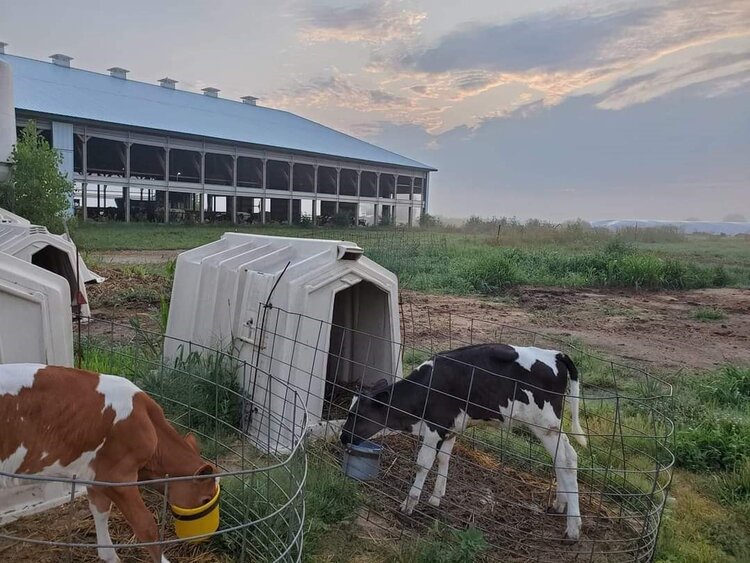Supply Chains and the Pandemic: Lessons Learned
September 23, 2021
By Lydia Zerby
From farmers to processors to distributors and home delivery companies, three experts share how the pandemic created a unique set of challenges for the supply chain.

The pandemic drastically changed supply and demand patterns and significantly impacted grocery store supply chains. Adaptations and pivots have helped the industry to continue to thrive. From farmers to processors to distributors and home delivery companies, the pandemic created a unique set of challenges for all supply chain stages.
During a panel discussion as a part of the Iowa Grocery Industry Association’s annual conference, three subject matter experts shared insights on topics from weaknesses to sustainability.
Lesson Learned: Technology can make issues easier or harder. Innovation thrives when problems are identified and an opportunity is presented to pivot, adjust and do the right thing.
“Supply chains thrive when technology is used to improve predictability and consistency,” says Scott Grawe, chair of the Department of Supply Chain Management in the Ivy College of Business at Iowa State University. “Effective use of technology can also be used to substitute in places where you can’t find people,” Grawe adds.
It’s essential to be mindful of injecting technology into a platform that is consumer-facing. Consumers often don’t have the same expertise as those who design the technology, so issues can occur. Consider the introduction of self-check-out lanes at grocery stores. This is an example of why education and consumer-focused marketing are so important when introducing new technology.
Pam Bolin is no stranger to technology on her dairy farm in eastern Iowa. In December 2015, Bolin and her family invested in a milking robot they named “Rita.” This technology has made a huge difference for the Bolins. “It gives cows consistency and allows us to get good, clean milk. It has allowed us to double our herd without needing outside help,” Bolin explains.
“Technology has allowed automation of manufacturing processes in many plants and factories,” says Bob Gostomski, executive vice president of grocery at Mueller Yurgae and Associates, which is headquartered in Grimes. “As labor continues to be an issue for the manufacturing industry and many others as well, the automation of processes is quite helpful.”
Lesson Learned: The pandemic exposed many different weaknesses in the supply chain, and necessary adjustments had to be made.
 When thinking about how food and goods arrive to our local grocery stores, shipping ports are vital infrastructure. The U.S. imports a considerable amount of products and most come through four to five ports. “The increase in demand for imported goods causes congestion and along with labor shortages, it makes things difficult,” Grawe says. “It’s not always easy to open up additional ports as conditions with water levels for barges and other factors have to be considered.”
When thinking about how food and goods arrive to our local grocery stores, shipping ports are vital infrastructure. The U.S. imports a considerable amount of products and most come through four to five ports. “The increase in demand for imported goods causes congestion and along with labor shortages, it makes things difficult,” Grawe says. “It’s not always easy to open up additional ports as conditions with water levels for barges and other factors have to be considered.”
Packaging also creates issues with the supply chain. Gostomski explains, “Suppliers’ reserve cases of products were wiped out within four to six weeks when the pandemic began. The issue now isn’t food producing; we can produce the food. Packaging shortages for items like lids, bottles and jars are causing concerns.”
Shipping route costs from places such as China are also doubling or tripling, which adds costs to the system for everyone.
Bolin agrees that all the factors mentioned above are cause for concern, but her dairy farm also adds living creatures to the mix. “We can’t just tell the cows we’re taking a week off, and we don’t need your milk right now,” Bolin explains. “Cows must be milked every day, and because dairy is sold fresh, it must go from farm to store in 48 hours or less.”
Iowa has a relatively small number of dairy processing facilities. When one facility needs to shift production, it can cause a bottleneck for dairy producers to ship its milk supply. This forced some areas nationally to dump milk. “We need to continue to add more processing facilities to our region. Doing so will ensure we can adapt to supply chain needs more efficiently in the future without shipping our product out of state,” Bolin says.
Lesson Learned: Sustainability is more important now than ever. Not only sustainability of supply chains but also how farmers and corporations incorporate it into their business plans.
Grawe, who interacts daily with students at Iowa State, says college kids are passionate about sustainability. “When I look at the food choices they are making, I can see they are willing to pay a premium for products that are healthier and more sustainable,” Grawe explains.
 He adds that sustainability was formerly the focus of just one course in the Department of Supply Chain Management, but now it’s a topic that is integrated into each one of their courses. “Talking about sustainability isn’t just limited to the environment. A company that values sustainability needs to look closely at its partners and find those suppliers, customers and service providers who are going to partner with them long term to focus on sustainability.”
He adds that sustainability was formerly the focus of just one course in the Department of Supply Chain Management, but now it’s a topic that is integrated into each one of their courses. “Talking about sustainability isn’t just limited to the environment. A company that values sustainability needs to look closely at its partners and find those suppliers, customers and service providers who are going to partner with them long term to focus on sustainability.”
On Bolin’s dairy farm in eastern Iowa, sustainability is present in many forms. Bolin says they have incorporated “little things” like growing their crops to feed cows, using the manure on the cropland as fertilizer and managing the acres they plant so they aren’t wasting manure. This allows them to use less commercial fertilizer.
More recently, the Bolin’s designed a new barn with efficient lighting and timers. “Cows produce better when the lights go on and off – a fact that has been proven through research studies,” says Bolin. Instead of the need to use heaters to keep fresh water for the cows thawed during the winter months, additional waterers are placed inside the barn, so the cow’s body heat is used to keep the water thawed.
“Consumers want to know where their food comes from, how we are taking care of the animals and how we are helping the planet,” Bolin explains. “Dairy has a great story and history of sustainability; most consumers just don’t know the details.”
She adds, “Sustainable nutrition is a story we need to share. We’re using land that couldn’t be used to feed people to feed them through the cattle we raise. That’s something sustainable and very important to the future of healthy children.”